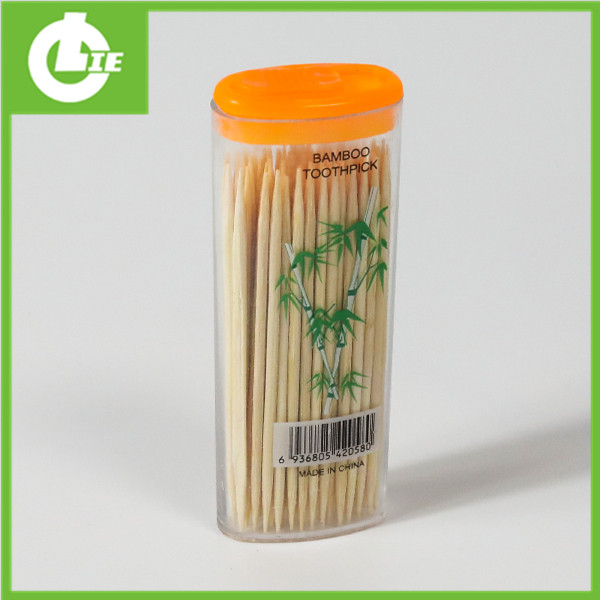Fresh bamboo with bright colors will gradually lose its luster or even change color when stored for a long time; and bamboo contains more starch, sugar, protein and fat, etc., it is susceptible to fungus and insects, reducing the value of use and economic benefits. The mildew of bamboo is very prominent, which not only affects the appearance of bamboo and its products, but also creates conditions for other fungal pests. Mold mycelium can produce a large number of colored spores during the reproductive growth stage and pollute the surface of bamboo. Some hyphae (such as Fusarium) can secrete pigments and contaminate the surface of bamboo. The surface of heavily polluted bamboo is brown or black. Due to the penetrating effect of the pigment, the pollution can reach a depth of several millimeters. Even though washing, sanding, planing, etc., the mildew cannot be eliminated, which seriously affects the appearance quality of bamboo materials and bamboo products. Bamboo will also become blue and darker due to the infection of discoloring fungi, and its luster will be weakened.
Since the 1980s, a large number of studies on bamboo mildew prevention have been carried out at home and abroad. Most of the bamboo discoloration fungi belong to the genera of the family Deuteromycetes, Hyphomycetes, Deuteromycotina [32]. Hyphomycelaceae (Hyphomycelaceae) Penicillium (Penicilllum Link.), Aspergillus pergillus (Mich.) Link) and Trichoderma (Trichoderma Pers.) and other genus molds mainly cause bamboo green, blue, yellow, red, gray, etc. Discoloration pollution; CladosporiumLink, ArthrinumKunze, AltemarlaNees, VerticilliumNees and other genera of Dematlaceae mainly cause brown and black bamboo Pollution. The main types of mold-causing bamboo in different regions are different, such as Cladosporium oxysporum and Trichoderma viride, which are common in the south, which are rare in the north.
The degree of mildew of bamboo is from mild to severe, from sporadic distribution→even distribution→mycelium covering→growing fruit body, until the bamboo loses its processing and utilization performance. In the dark and humid environment in the wild, evenly distributed and hyphae-covered mildews that discolor the bamboo are often produced. Substantia nigra, conidia disc, ascus shell and other types are mostly produced in the sun and rain in the open air environment. Environmental humidity is the key to bamboo mildew. When the humidity is lower than 75%, it is basically not mildewed, and when the humidity is higher than 95%, it is very easy to mildew; the optimum temperature for bamboo mildew is 20~30℃, and the optimum pH is 4~ 6. The mildew resistance of bamboo is also related to bamboo species, bamboo age, rank and harvesting season. Mildew mainly affects the clean and beautiful appearance of bamboo products, but also reduces the surface strength of bamboo materials and shortens the service life of bamboo materials. The anti-mildew treatment of bamboo is an important part of the industrialized utilization of bamboo. Bamboo should be dried in time and stored in a ventilated and clean environment. It can be boiled to kill potential molds and silverfish, or surface treatments such as bleaching and painting can be carried out.
The active ingredients of domestic and foreign commercial antifungal agents are often a mixture of two or three fungicides, and high-efficiency, long-acting, low-toxicity, low-cost, multi-effect, and broad-spectrum bamboo antifungal agents are usually selected. However, the outer wall of bamboo is dense, and the liquid medicine is extremely difficult to penetrate, and its anti-mold treatment method is different from that of wood. The treatment of bamboo anti-mildew chemicals includes brushing method, dipping method and pressure injection method.
1. The brushing method is to evenly apply the anti-mildew agent on the surface of the bamboo to inhibit or kill the surface mold. This method is simple to operate, but only suitable for short-term mildew prevention.
2. The dipping method is to immerse the bamboo material in the anti-mold drug solution, so that the drug solution is immersed into the tissue. According to different treatment methods, it can be divided into room temperature dipping, heating dipping, and hot-cold bath alternate dipping. Generally, the anti-mildew effect of the alternating hot and cold bath method is greater than that of the hot dipping method than that of the room temperature dipping method.
3. The pressurized injection method is to cut off the top of the newly harvested bamboo stalk, put it in a pressure-resistant leather tube, and tie it tightly with a metal ring or iron wire. The liquid flows along the skin tube to the bamboo tip section, and then pressurizes on the liquid surface of the medicine storage tank, so that the medicinal liquid enters the bamboo material along the bamboo tip section tube.
In addition to the above, there are physical sterilization methods such as high temperature sterilization, water immersion, smoking and whitening, but the overall economic effect is not high.


